Amidst songs, prayers and fasting, participants find strength and community in this nocturnal ceremony.
Story by Tracy L. Barnett
Fotografía por Rogelio Martínez Cárdenas
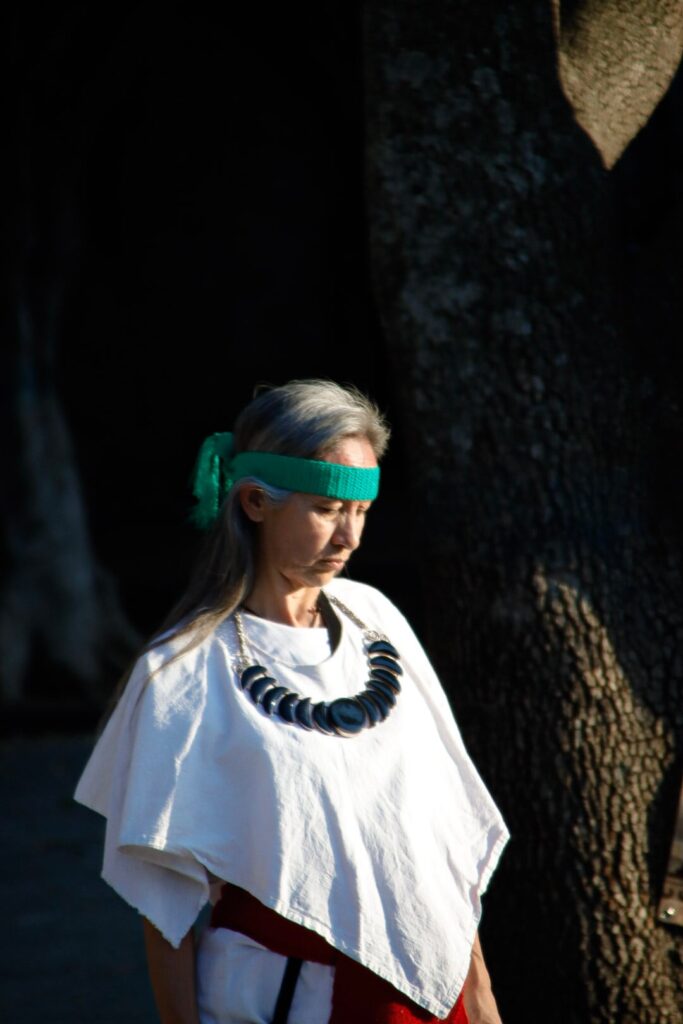
Women from across Mexico gather in a camp on the slopes of Cerro Gordo, overlooking the ancient city of Teotihuacán. They arrive after weeks of fasting, ceremony, and preparation—many having saved money, organized raffles and sales throughout the year—to participate in the Moon Dance, a women’s ceremonial practice revived in recent decades as a counterpart to the more widespread Sun Dance.
Last year, after several seasons of dancing with the circle Kalpulli Kuetzpalkalli, I attended this gathering for the first time. On the final day, I spoke with Abuela Ana Lucía Chinas—grandmother and guide of the circle—about how the Moon Dance was woven together and what it asks of those who enter it. The following is an edited version of that conversation.
This is the first part of a two-part series on the Moon Dance. See also:
Part 2 — Four Nights, One Vision: How the Moon Dance Transforms Women at Teotihuacán
Part 3 — Moon Dance: Healing the Mother Wound
Para leerlo en español, vea Aquí
Tracy: Abuela, can you start by sharing a bit about yourself, and the story of how you came to the Moon Dance?
Abuela Ana Lucía: My name is Ana Lucía—Akanaualtzin. I’m part of Kalpulli Koakalko, the circle that organizes the Moon Dance, and I’m currently its guide. How did I arrive at the Moon Dance? Through many different circumstances. In 1992, during the counter-celebration of the so-called “discovery” of the Americas, there was a continental run called the Journeys of Peace and Dignity.
Tracy: What happened then that moved you?
Abuela Ana Lucía: At that time, they came to the Analco neighborhood in Guadalajara, where my family lives. I went to see them and was deeply moved by the philosophy they carried and what they were sharing… I came looking for them here in Teotihuacán, in Mexico City, in October of 1992.
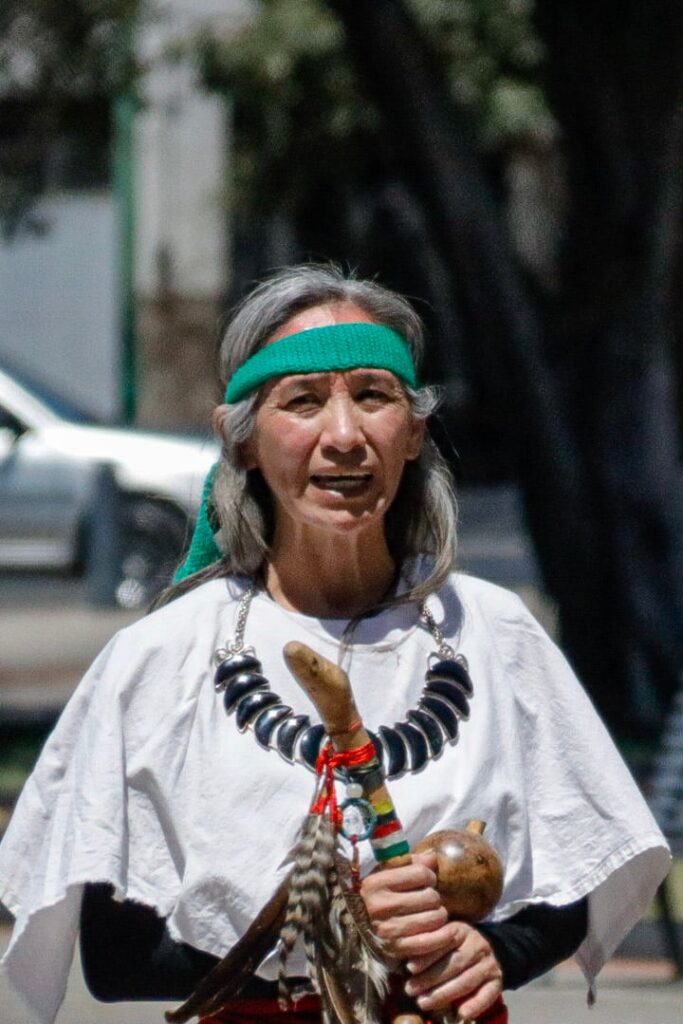
Tracy: How old were you at the time?
Abuela Ana Lucía: In 1992 I was 22, about to turn 23, and finishing my degree in chemical engineering. I was trained as an engineer, with a very rational mindset. Back then I didn’t identify much with women—I moved more in a world of men. Over time, the dance forced me to reconcile with my feminine side, to value what my grandmother and other women had passed down without books or laboratories, only through their experience and wisdom.
Tracy: And what changed afterward?
Abuela Ana Lucía: In 1994, when I was pregnant, I felt I needed to leave my daughter a better world. That’s when I began to dance—while carrying her in my womb. Over time I realized it wasn’t just about the dance itself, but about everything that surrounds it.
Tracy: You also mention the relationship with the Sun Dance. How do you understand that link?
Abuela Ana Lucía: I met Tlakaélel, a great ceremonial leader, and I heard about the Sun Dance, which is said to have Lakota origins. He came to the conclusion that it was not only Lakota, and he explained some things to the Lakota people themselves. He said: “The Sun Dance is not just Lakota—it is also Mexican, and I’m going to take it to Mexico, along the path of Nahui Mitl.” (Four Arrows, symbol of the four sacred directions).
His partner, Doña Totlalnantzin—Patricia Guerra—began to ask: What is there for women? It’s said that the Moon Dance came to her in a vision, which she enriched with what she had learned and shared with women of many different nations.
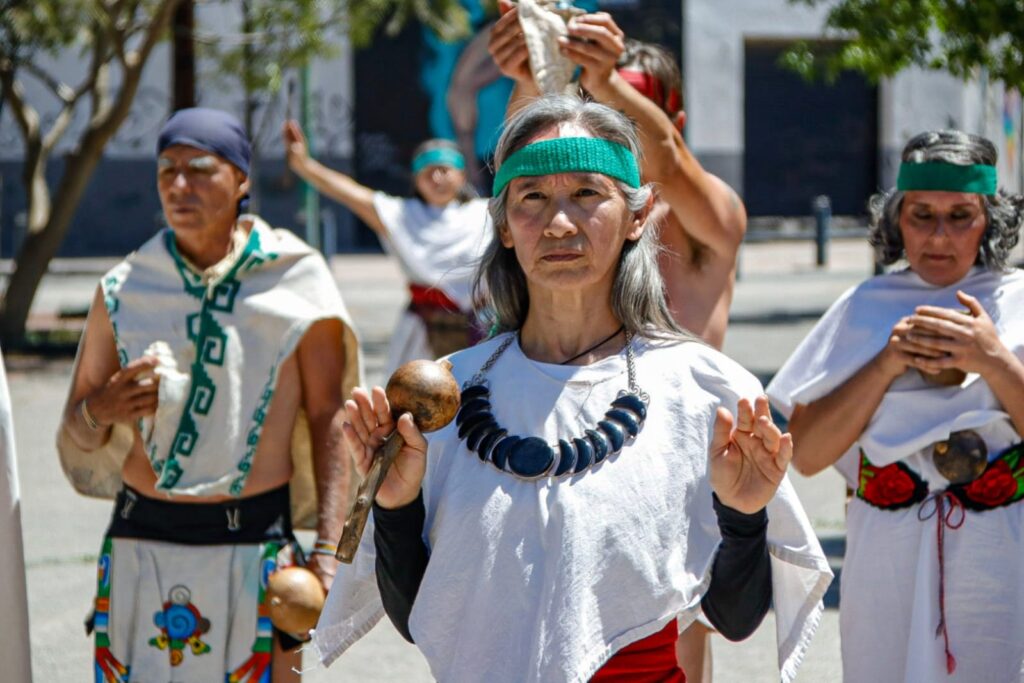
Tracy: When did the Moon Dance begin here, and how did you come to be its guide?
Abuela Ana Lucía: The first Moon Dance was held in that same 1992, with only a few women participating.
Later, I got to know the Sun Dance at the home of Abuela Isabel Quevedo, in Cuernavaca in 1995. When I came to the Moon Dance in the 2000s, I entered as a dancer, though I didn’t have the traditional attire. In the Sun Dance a leader is chosen every year, but in the Moon Dance, a grandmother is chosen—and she continues in that role until she steps down. I hadn’t even completed my full cycle when they named me a grandmother.
At first, when they asked me to lead, I said no. It felt impossible: I was living in Jalisco, had very little vacation time, was a single mother, and still working in my profession. Many times I thought I wouldn’t be able to sustain it—but every year I came back. What kept me going was the conviction that this path was for my daughter, and for the women who would come after me.
By my fourth year, I was already recognized as a grandmother of the Moon Dance—and I stayed. This year will be my 22nd, and I haven’t missed a single one.
Tracy: As an engineer, what did you find so transformative about this path?
Abuela Ana Lucía: I’ve always been very disciplined, very strict about schedules. When I began to learn about Mexicanidad, I realized that the values of our ancestors still endure. And I saw that it’s not just about science—there are other things the eyes can’t see. What I wanted was to leave my daughter another kind of world: one not based only on competition, money, or material things.
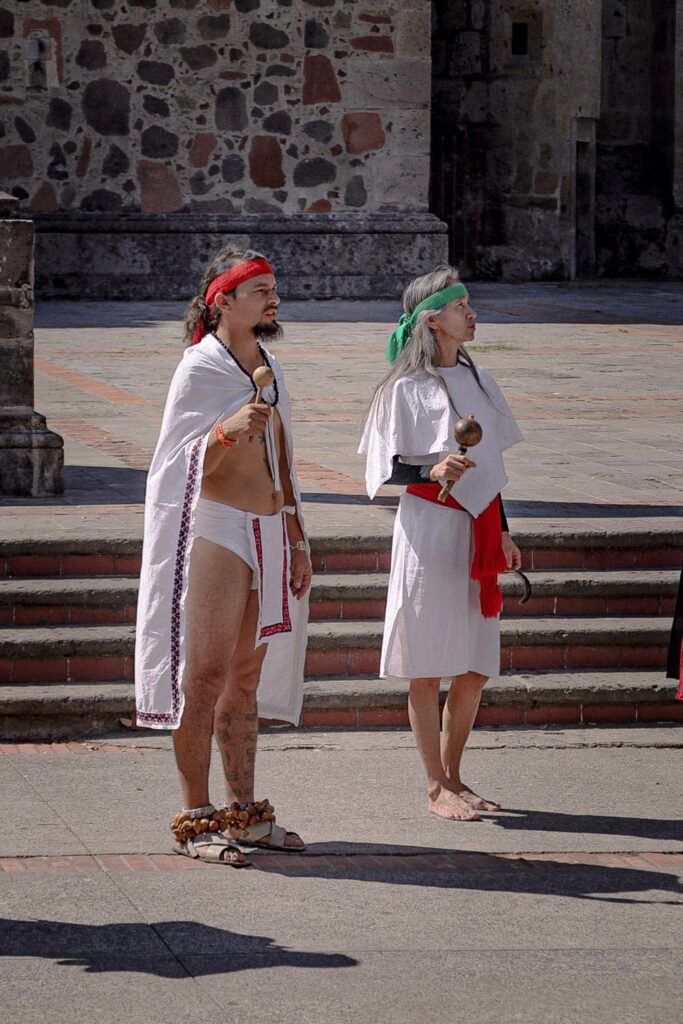
Tracy: What is the Moon Dance—in practice?
Abuela Ana Lucía: The Moon Dance is a ceremony mainly dedicated to feminine energy, to connecting with the subtle, with feelings and emotions. The dance takes place at night, on Cerro del Tonan (Cerro Gordo). We prepare the space, and we have to cover the expenses. It’s the dancers who sustain the ceremony. We also organize activities to raise funds—and we should also learn to receive, because it’s the work and the life and time of the people that makes it possible.
Tracy: What does the dance ask, and what does it offer?
Abuela Ana Lucía: The dance prepares us—it forces us to face lack of sleep, fear, and the cold. You can’t climb the mountain and come back the same. In the circle, no one lifts my feet for me—I am the one who has to do it. That gives us an incredible strength of will, and it helps us understand when a path is not ours.
Tracy: You say the Moon Dance was a pioneer in work with women.
Abuela Ana Lucía: It began in the 1990s, before many of today’s frameworks around “the feminine.” The dance teaches us about duality, about complementarity. In tradition there are roles, and those roles are respected; but if someone is missing, we step in, and the prayer continues. We are disciplined: to be admitted as a dancer, we ask for at least a year of service and preparation. Not everyone is willing to do that in today’s fast-consumption society.
Tracy: Can you share examples of transformed lives?
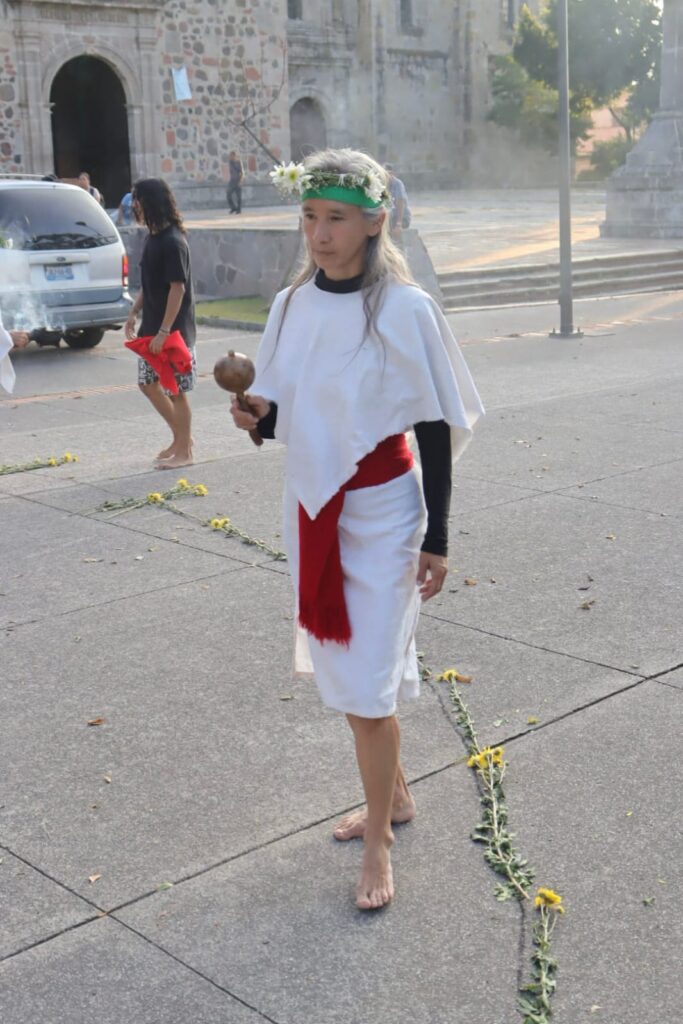
Abuela Ana Lucía: One woman’s partner took her daughter when the child was two years old. She told me, “If I hadn’t had this network of women, I wouldn’t have made it through.” Some researchers have shifted their work to include a gender perspective, and women who never imagined themselves as mothers have decided to have children. Many are raising sons who grow up respectful of women.
We are forming guides—leaders who are conscious and well-prepared.
Tracy: A final message, Abuela, for those who are thinking about joining?
Abuela Ana Lucía: They need to be who they are, to learn their own nature. No one is going to do things for them. They can, they know how. And if they can’t do it alone, the Moon Dance can provide them with very strong support.
🌙 If you are invited to participate
- The Moon Dance is not a public performance; attendance is by invitation only.
- Roles include dancers, singers, firekeepers, kitchen crews, and support people.
- Contributions are made through offerings of work, food, and resources.
- Dancers fast during the four nights; support people may eat lightly.
- Respect for protocol is central: no photos during ceremony.
- This year’s Moon Dance is Oct. 3-7. For more information, see the group’s Facebook page: Metztli Mitotianiliztli Danza de la Luna
🌿 Glossary
- Temazcal: Sweat-lodge purification ceremony.
- Huehue: Large ceremonial drum.
- Rezos: Prayer ties made of tobacco and cloth.
- Nahui Mitl (Four Arrows): Symbol of the four sacred directions.
Kalpulli: Community or ceremonial group.
English follows. Gracias Ana Lucia, por su dedicación, y tambien a Tracy Barnett para publicar este en excelente revista digital Esperanza Projecto. Estuve danzante de la luna entre los años 1992-2010. Todavia, me da fuerza y direción cuando encuentro retos y dificultades en el camino de la vida. Es un gran don al humanidad y excelente experiencia para mujeres conocerse mas. Ometeotl. ENGLISH Thank you grandmother Ana Lucia, for your dedication and also Tracy Barnett for publishing this in your excellent online magazine, Project Hope. I danced the Women’s Moon Dance in the años of 1991-2010. To this day, this experience gives me strength and direction when I encounter challenges and difficulties in the path of life. The Moon Dance is a gift to humanity and an excellent experience for women to known themselves more deeply. Ometeotl (blessing of respect for understanding the path of oneness in duality)
Mi Estimada Zia: Thank you, Gracias, Tlazocomati Miak. Ometeotl!
Abuela Ana Lucía says the women will be holding you in their prayers. 🙏🙏🙏